- My Forums
- Tiger Rant
- LSU Recruiting
- SEC Rant
- Saints Talk
- Pelicans Talk
- More Sports Board
- Coaching Changes
- Fantasy Sports
- Golf Board
- Soccer Board
- O-T Lounge
- Tech Board
- Home/Garden Board
- Outdoor Board
- Health/Fitness Board
- Movie/TV Board
- Book Board
- Music Board
- Political Talk
- Money Talk
- Fark Board
- Gaming Board
- Travel Board
- Food/Drink Board
- Ticket Exchange
- TD Help Board
Customize My Forums- View All Forums
- Show Left Links
- Topic Sort Options
- Trending Topics
- Recent Topics
- Active Topics
Started By
Message
Cabbage Challenge Submission Thread
Posted on 4/9/24 at 10:14 am
Posted on 4/9/24 at 10:14 am
Well, I’m not in charge anymore, but this thread was supposed to open around 9:00, so let’s get this party started. SUBMIT!
Posted on 4/9/24 at 10:15 am to Darla Hood
Mille Feuille Nabe
Mille Feuille Nabe is a Japanese hot pot dish with “a thousand layers” of Napa cabbage, pork belly, (or thinly sliced, fatty meat of choice, or tofu, if you are so inclined). One of the delights of this dish is the beautiful flower like presentation before cooking starts. While some of the beauty is lost as it cooks, hopefully you’ve made a delicious stock or broth that will make up in flavor, what it’s lost in looks. (Sorta like older women. )
)
Another aspect of this dish is that after all of the cabbage and pork belly have been eaten, you can cook noodles in the remaining broth for another meal, or as part of the one you’re serving.
The pot I used is a donabe, which is a clay pot that must be properly seasoned before use. It can be used on a gas burner or in the oven, but not the microwave or induction burner.
In addition to the Napa cabbage, I also layered in baby bok choy (also in the cabbage family), for color, beauty, and flavor.
The main players:

Donabe pot, shiitake and shimeji mushrooms, Napa cabbage, baby bok choy, thinly sliced pork belly from Asian Market. (You can also get thinly sliced beef there.)
First separate and wash the leaves.


Start layering. A cabbage leaf, bok choy, pork belly.

Stack the layers, about three layers to the stack. This pic only shows two layer stacks, but I added another layer, and more stacks.


Unfortunately, I didn’t get pics of cutting each stack into thirds, for the layering, so after the fact, I made up a couple more stacks to show how they are cut. I’d used up all the bok choy, so it’s just Napa and pork belly.



I didn’t really know how many stacks it would take to fill the pot, but next time I’d make a bunch before trying to arrange them in the pot. I’m also sorry I didn’t take pics as I was arranging the layers, but I was too caught up in it. I’d intended to use a couple of the larger shiitake mushrooms caps as decor, with a little bit of carving to them. Let’s just say my lack of artistry was in evidence, so they weren’t used, after all.

I used some miso broth with a black garlic sauce (awesome stuff) for the simmering liquid.

Don’t fill to the top, as the cabbage will also release liquid.


And then heat it up slowly to a simmer, but once it’s simmering, it shouldn’t take but fifteen or twenty minutes to cook.
Simmering.



Eating, and dipping. The dipping sauce is ponzu sauce with some togarishi pepper.



As I mentioned earlier, it loses its beauty after the cook.

But before!


Regardless of how this dish does in the challenge, it was a fun learning experience, including learning how to season a Donabe. I’d love to learn more Asian cooking.
Mille Feuille Nabe is a Japanese hot pot dish with “a thousand layers” of Napa cabbage, pork belly, (or thinly sliced, fatty meat of choice, or tofu, if you are so inclined). One of the delights of this dish is the beautiful flower like presentation before cooking starts. While some of the beauty is lost as it cooks, hopefully you’ve made a delicious stock or broth that will make up in flavor, what it’s lost in looks. (Sorta like older women.
Another aspect of this dish is that after all of the cabbage and pork belly have been eaten, you can cook noodles in the remaining broth for another meal, or as part of the one you’re serving.
The pot I used is a donabe, which is a clay pot that must be properly seasoned before use. It can be used on a gas burner or in the oven, but not the microwave or induction burner.
In addition to the Napa cabbage, I also layered in baby bok choy (also in the cabbage family), for color, beauty, and flavor.
The main players:

Donabe pot, shiitake and shimeji mushrooms, Napa cabbage, baby bok choy, thinly sliced pork belly from Asian Market. (You can also get thinly sliced beef there.)
First separate and wash the leaves.


Start layering. A cabbage leaf, bok choy, pork belly.

Stack the layers, about three layers to the stack. This pic only shows two layer stacks, but I added another layer, and more stacks.


Unfortunately, I didn’t get pics of cutting each stack into thirds, for the layering, so after the fact, I made up a couple more stacks to show how they are cut. I’d used up all the bok choy, so it’s just Napa and pork belly.



I didn’t really know how many stacks it would take to fill the pot, but next time I’d make a bunch before trying to arrange them in the pot. I’m also sorry I didn’t take pics as I was arranging the layers, but I was too caught up in it. I’d intended to use a couple of the larger shiitake mushrooms caps as decor, with a little bit of carving to them. Let’s just say my lack of artistry was in evidence, so they weren’t used, after all.

I used some miso broth with a black garlic sauce (awesome stuff) for the simmering liquid.

Don’t fill to the top, as the cabbage will also release liquid.


And then heat it up slowly to a simmer, but once it’s simmering, it shouldn’t take but fifteen or twenty minutes to cook.
Simmering.



Eating, and dipping. The dipping sauce is ponzu sauce with some togarishi pepper.



As I mentioned earlier, it loses its beauty after the cook.

But before!


Regardless of how this dish does in the challenge, it was a fun learning experience, including learning how to season a Donabe. I’d love to learn more Asian cooking.
This post was edited on 4/10/24 at 9:22 am
Posted on 4/9/24 at 10:20 am to Darla Hood
Thank you! I got tied up.
Posted on 4/9/24 at 10:27 am to Darla Hood
Oh, Darla. Just when I thought I couldn't love you more.
That dish looks divine.
That dish looks divine.
Posted on 4/9/24 at 11:02 am to L Boogie
CAJUN CABBAGE ROLLS
Boudin stuffed cabbage rolls with homemade boudin and Cajun Power Spaghetti Sauce.
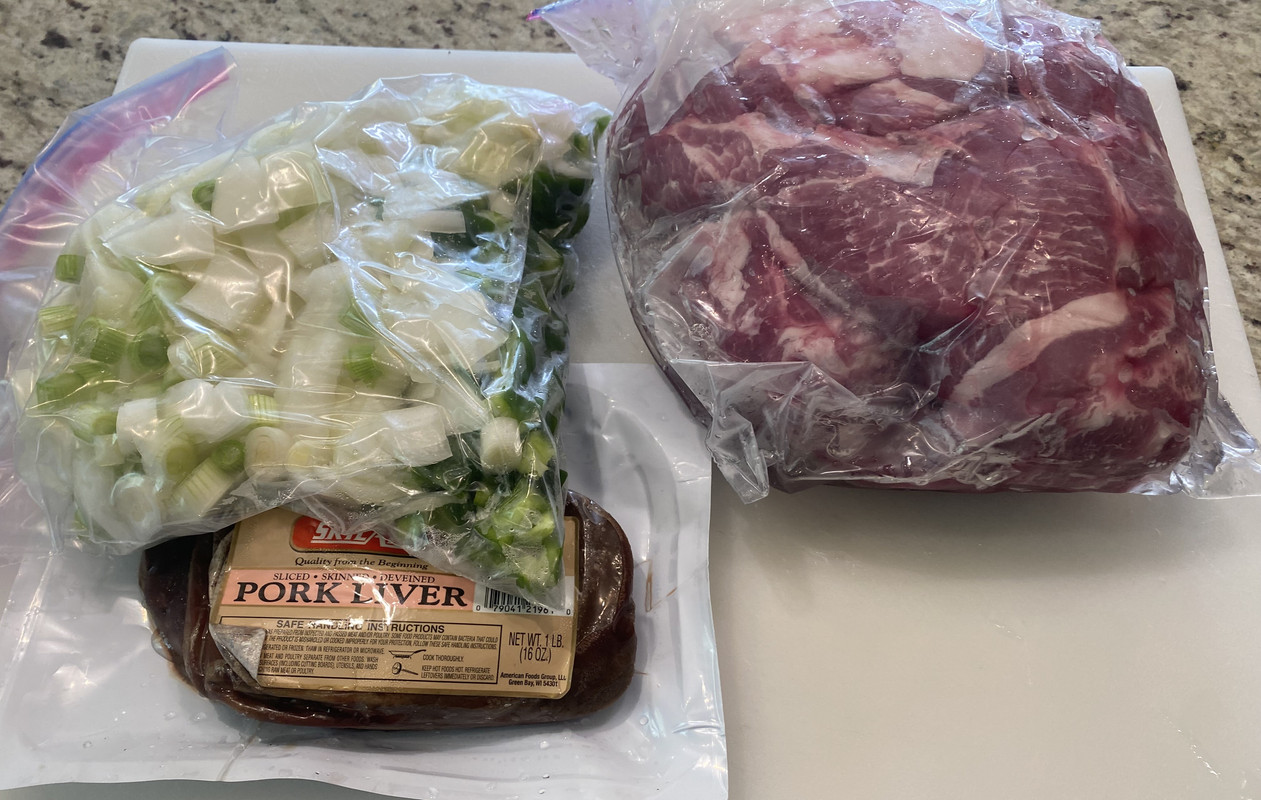
Time to make the boudin. Boston butt, pork liver, onion, bell pepper, green onion, rice, parsley, seasoning.
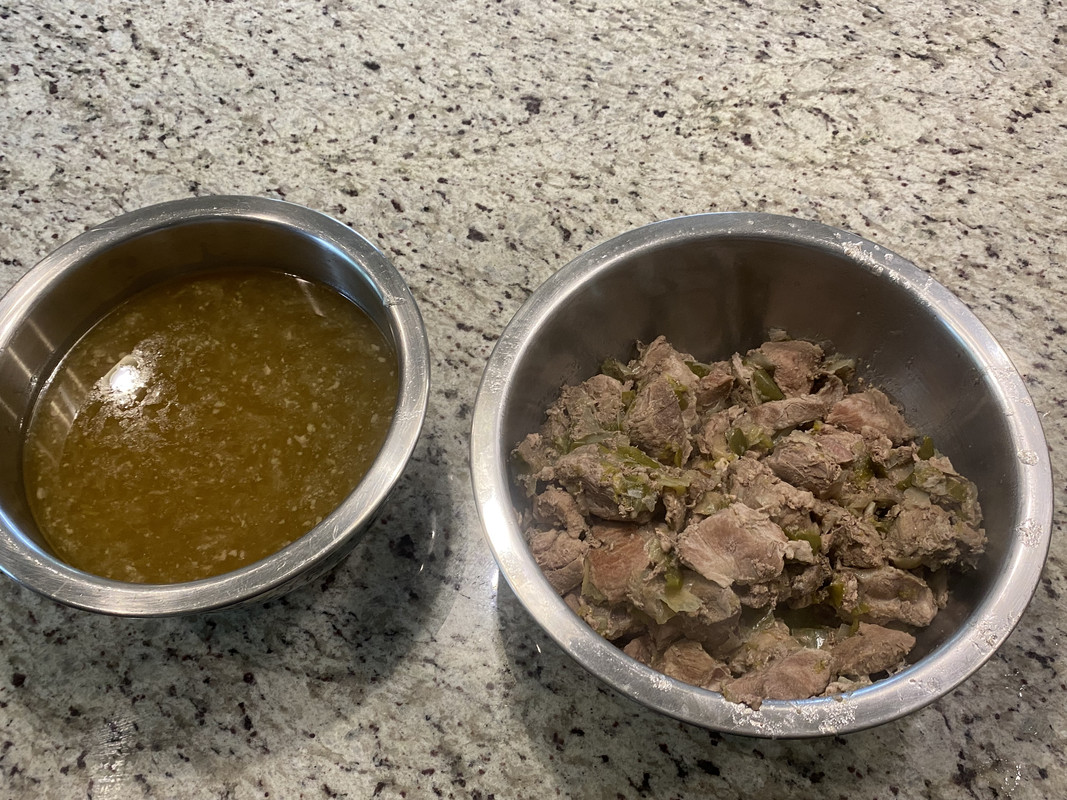
The pork was cut along with the veggies. It was then boiled in a pot with water. After a few hours, the meat was strained from the liquid, reserving both the meat and veggies and the liquid.

The meat and veggies were ground in a grinder.
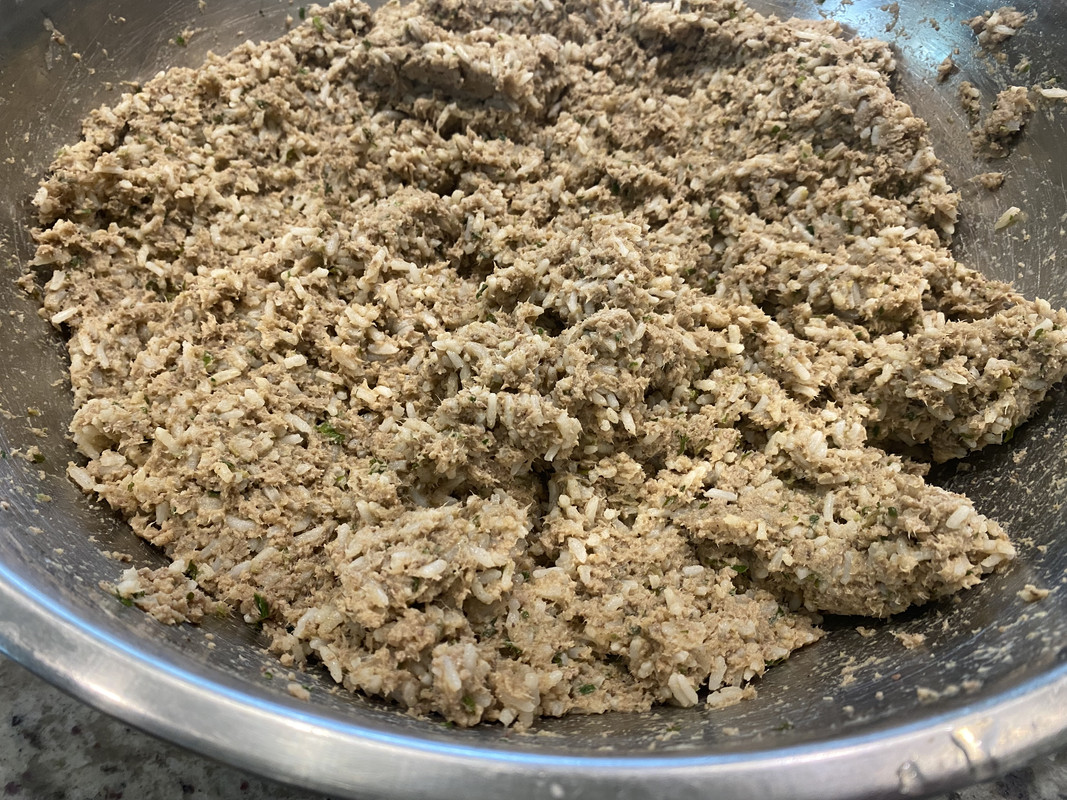
Mixed the meat, rice, reserved liquid, and seasonings to complete the boudin.
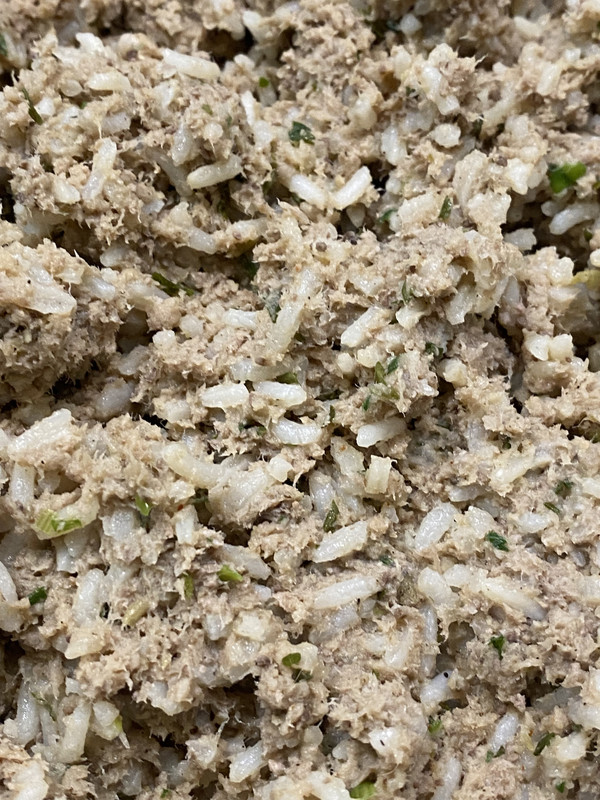

Blanched the cabbage in water. Then stuffed cabbage leaves with the boudin and rolled.
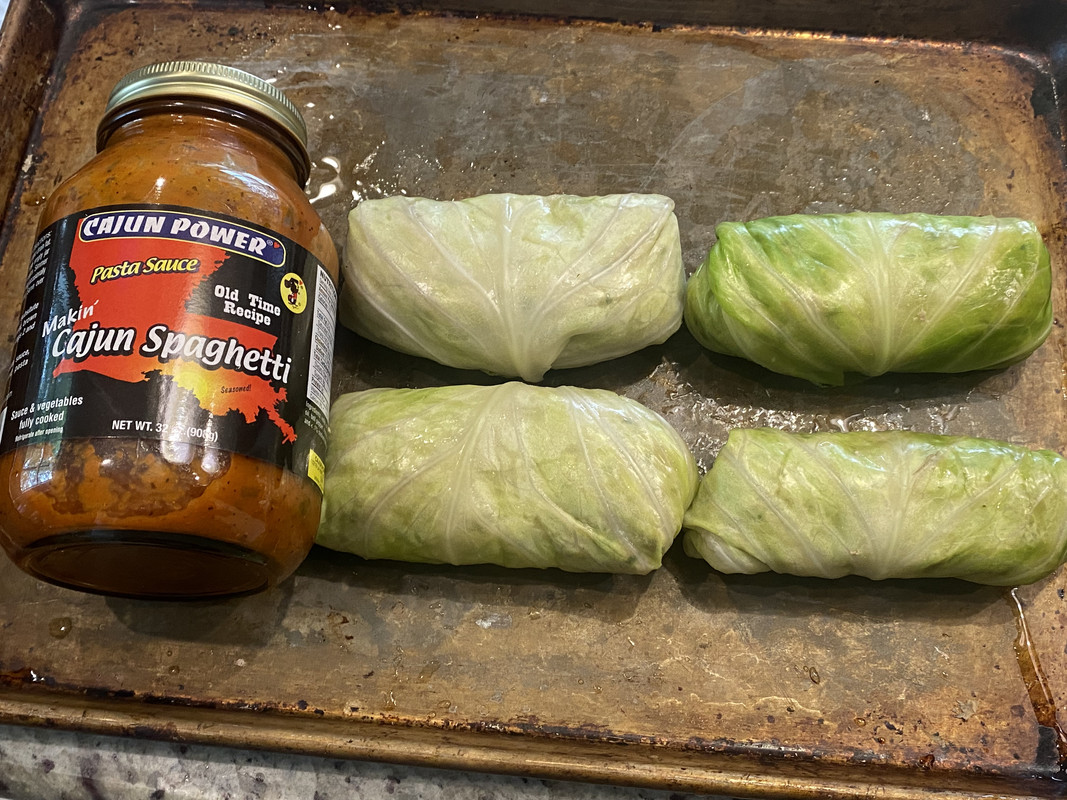
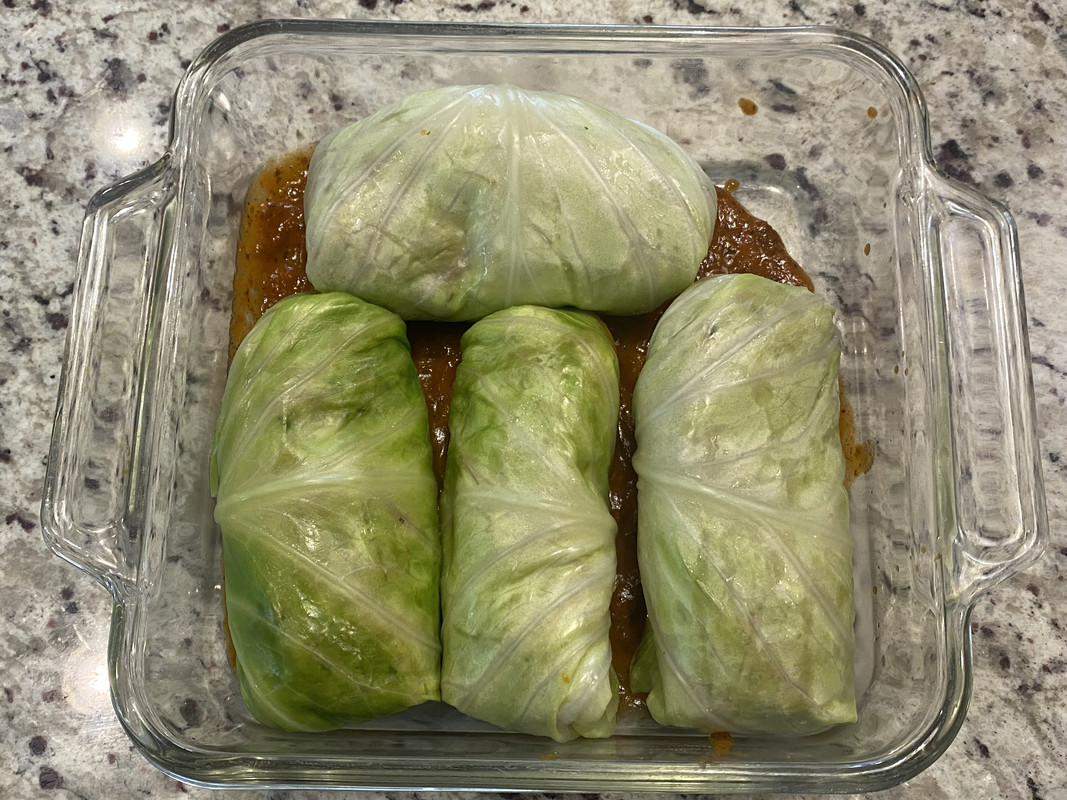
Covered in Cajun Power sauce and baked.

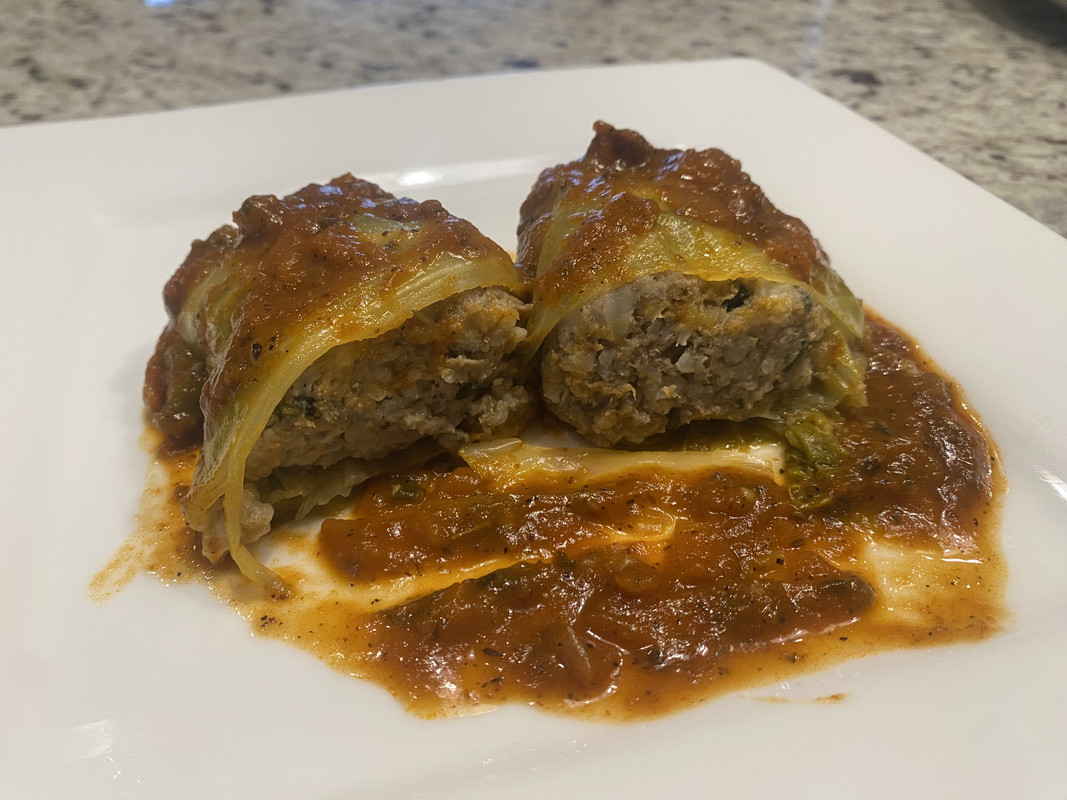
Boudin stuffed cabbage rolls with homemade boudin and Cajun Power Spaghetti Sauce.

Time to make the boudin. Boston butt, pork liver, onion, bell pepper, green onion, rice, parsley, seasoning.

The pork was cut along with the veggies. It was then boiled in a pot with water. After a few hours, the meat was strained from the liquid, reserving both the meat and veggies and the liquid.

The meat and veggies were ground in a grinder.

Mixed the meat, rice, reserved liquid, and seasonings to complete the boudin.


Blanched the cabbage in water. Then stuffed cabbage leaves with the boudin and rolled.


Covered in Cajun Power sauce and baked.


Posted on 4/9/24 at 11:09 am to L Boogie
quote:Thank you!
That dish looks divine.
And Sixth, the Cajun cabbage rolls are a great idea!
Posted on 4/9/24 at 11:29 am to Darla Hood
Egg rolls and Asian slaw
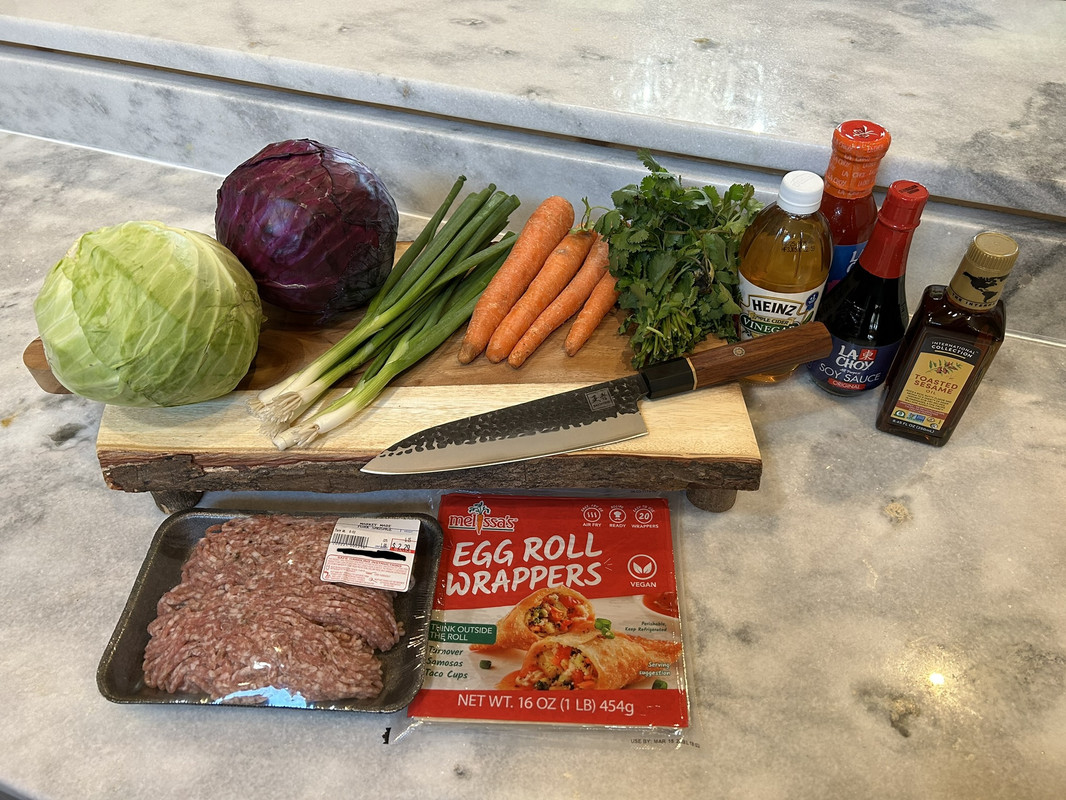
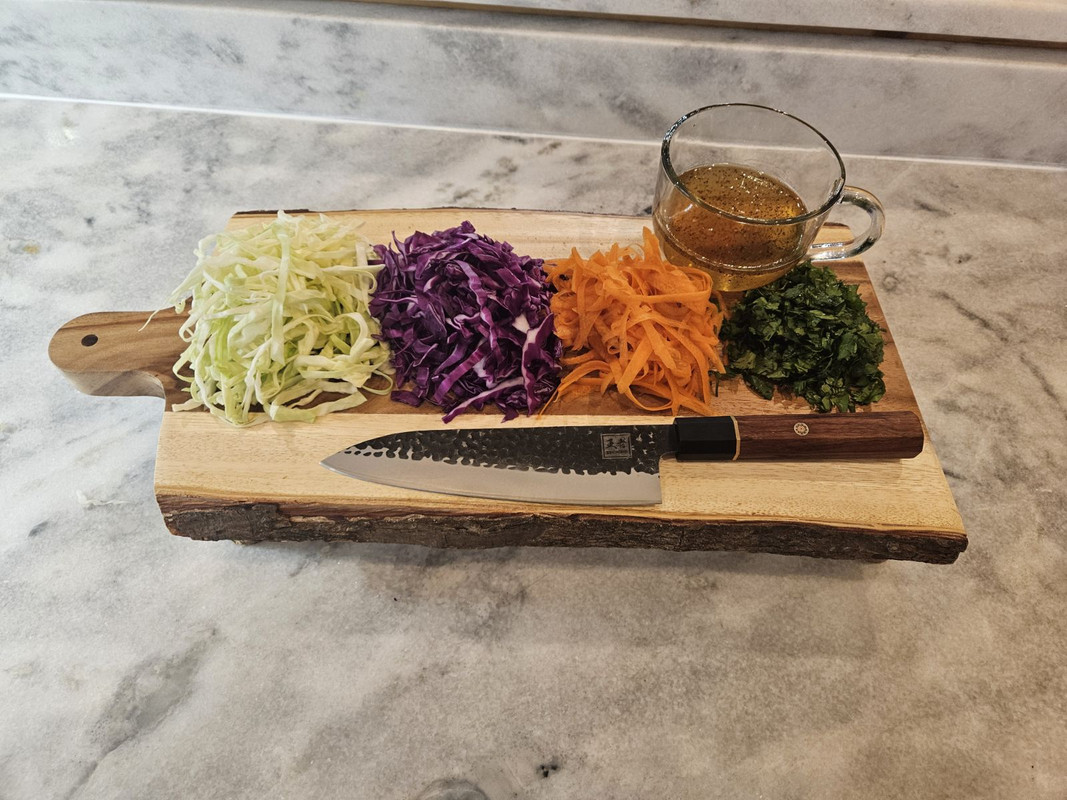
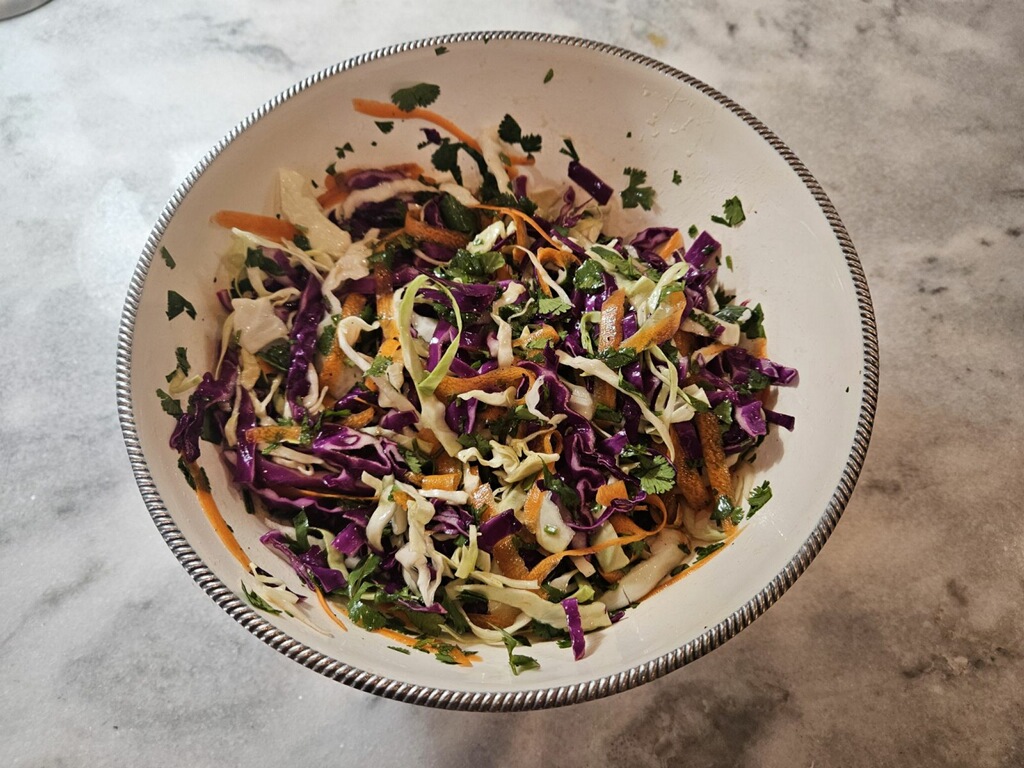
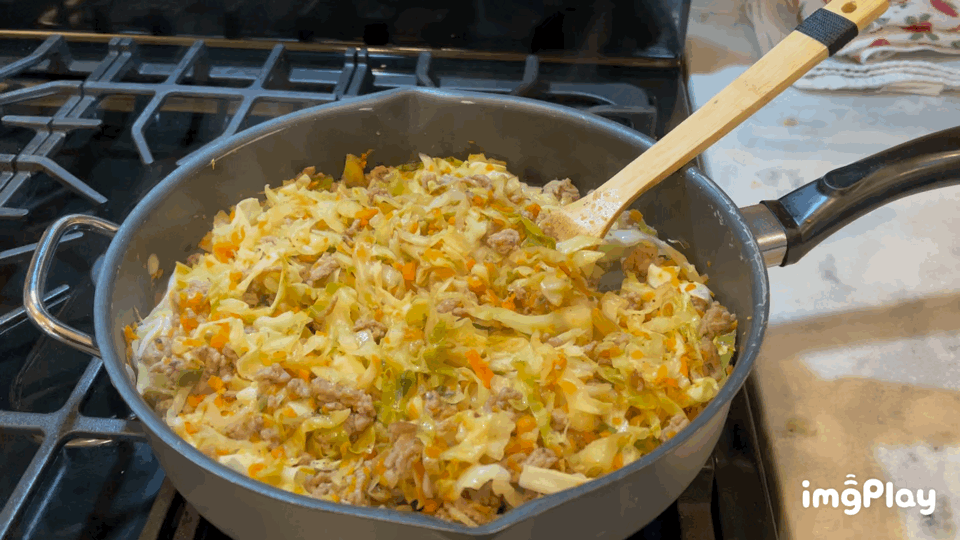

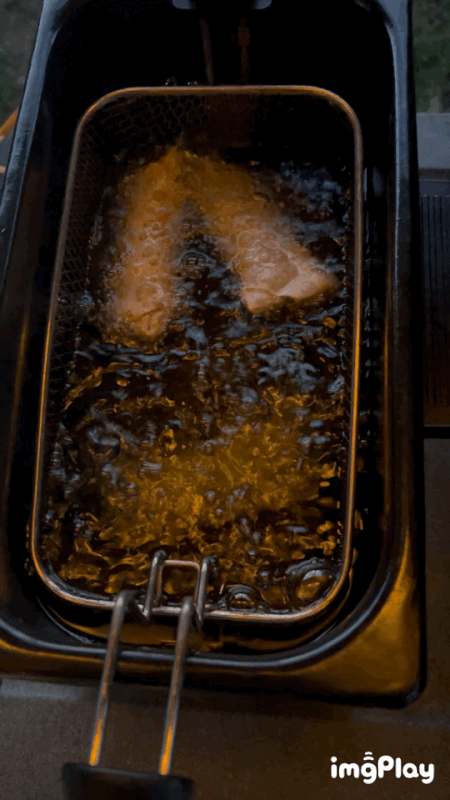

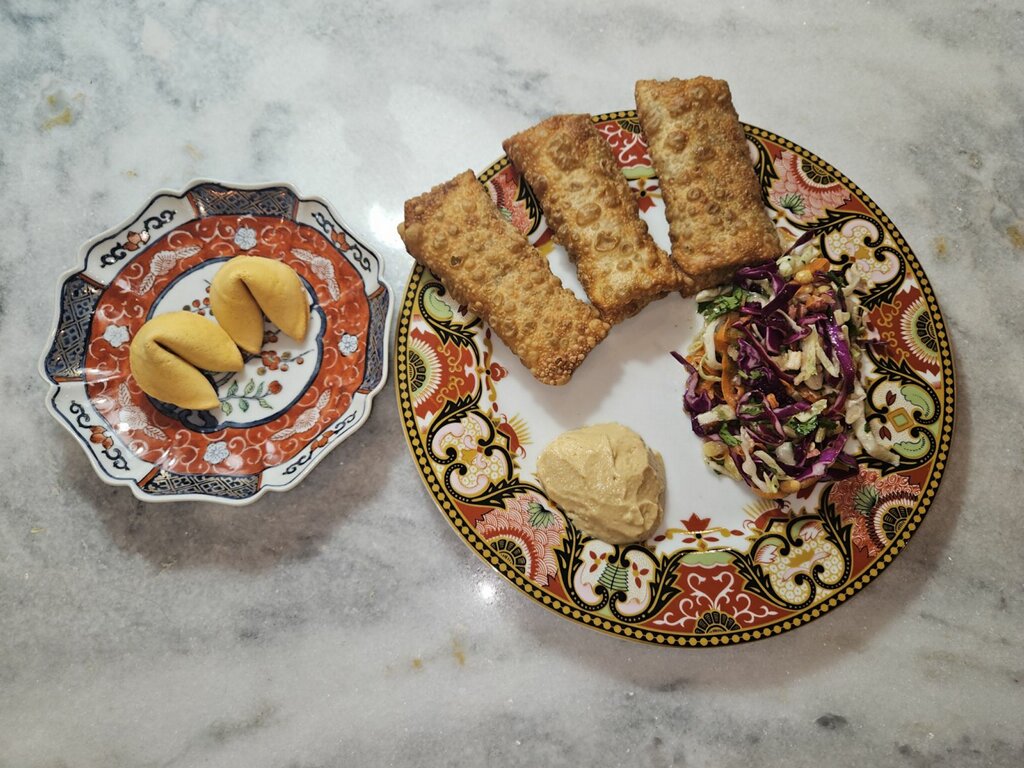








Posted on 4/9/24 at 11:30 am to Darla Hood
Spicy Brown Butter Miso Maple Cabbage

Brown your cabbage and move it to the oven for roasting until tender.

Meanwhile, brown your butter with a generous portion of red pepper flakes. Add real maple syrup and some white miso for umami.




Drizzle the glaze on your tender roasted cabbage and garnish with green onions and sesame seeds. Serve with lots of lime juice to cut the richness of the miso/brown butter/maple.




Brown your cabbage and move it to the oven for roasting until tender.

Meanwhile, brown your butter with a generous portion of red pepper flakes. Add real maple syrup and some white miso for umami.




Drizzle the glaze on your tender roasted cabbage and garnish with green onions and sesame seeds. Serve with lots of lime juice to cut the richness of the miso/brown butter/maple.



Posted on 4/9/24 at 8:16 pm to Darla Hood
Kimchi & Korean Corned Beef Egg Rolls
First, I made Kimchi. I used Roy Choi’s recipe with only one change, the omission of canned oysters. His method is straight forward and doesn’t involve any unnecessary steps.

The first step is soaking the cabbage in salted water. The recipe says 2-3 hours but I quartered these and rotated them in the pans every 15 minutes for one hour to speed up the process.

While the cabbage is soaking, measure and prepare all the ingredients for the paste and place them into a blender. Process it until a smooth paste is formed. At this point, it smells and tastes like kimchi. Then I hand mixed in fermented shrimp and the flavor went up to 11.


Next is the tedious task of covering every cabbage leaf with the paste and layering the cut chives (scallions).

Well coated.

All jarred up. Two days at room temperature and then 2 weeks under refrigeration.

While the kimchi was aging, I started brining the corned beef. I found this little #1 eye of ribeye at the Nam Dae Mun and trimmed it up.

For the spice blend I toasted some familiar Asian spices. Indian coriander seed, black peppercorns, fennel seed, star anise, clove, and Saigon cinnamon.

The brine consisted of water, gochujang, the spice blend, salt, and instacure #1.

I vacuum sealed it and stored it in the refrigerator for 8 days, turning it over every 24 hours.
It was cooked sous vide to control the final cook temperature.
Here is the bag after cooking and cooling.

Next, I did a little QC before making the eggrolls. The flavor is unique with a corned beef texture. It tastes like a combination of corned beef and spicy steak.

Then, I assembled the eggrolls. I was inspired by Reuben Eggrolls and added cheese, which is also found in Korean Corndogs. I layered two slices of corned beef, mozzarella cheese, and kimchi in each eggroll.





Frying and post frying action


Plated both restaurant and food truck style. The two sauces are Gochujang Sauce and Gochujang Aioli.


First, I made Kimchi. I used Roy Choi’s recipe with only one change, the omission of canned oysters. His method is straight forward and doesn’t involve any unnecessary steps.

The first step is soaking the cabbage in salted water. The recipe says 2-3 hours but I quartered these and rotated them in the pans every 15 minutes for one hour to speed up the process.

While the cabbage is soaking, measure and prepare all the ingredients for the paste and place them into a blender. Process it until a smooth paste is formed. At this point, it smells and tastes like kimchi. Then I hand mixed in fermented shrimp and the flavor went up to 11.


Next is the tedious task of covering every cabbage leaf with the paste and layering the cut chives (scallions).

Well coated.

All jarred up. Two days at room temperature and then 2 weeks under refrigeration.

While the kimchi was aging, I started brining the corned beef. I found this little #1 eye of ribeye at the Nam Dae Mun and trimmed it up.

For the spice blend I toasted some familiar Asian spices. Indian coriander seed, black peppercorns, fennel seed, star anise, clove, and Saigon cinnamon.

The brine consisted of water, gochujang, the spice blend, salt, and instacure #1.

I vacuum sealed it and stored it in the refrigerator for 8 days, turning it over every 24 hours.
It was cooked sous vide to control the final cook temperature.
Here is the bag after cooking and cooling.

Next, I did a little QC before making the eggrolls. The flavor is unique with a corned beef texture. It tastes like a combination of corned beef and spicy steak.

Then, I assembled the eggrolls. I was inspired by Reuben Eggrolls and added cheese, which is also found in Korean Corndogs. I layered two slices of corned beef, mozzarella cheese, and kimchi in each eggroll.





Frying and post frying action


Plated both restaurant and food truck style. The two sauces are Gochujang Sauce and Gochujang Aioli.


Posted on 4/10/24 at 9:18 am to BigDropper
Submmission Thread Closed
Back to top

 5
5










